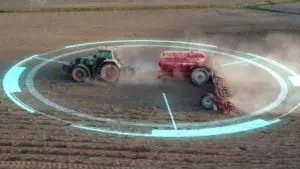Overcoming Problems with Hybrid Rocket Engines is Key to Launching Us Further into Space
Hybrid isn’t just the word with us earthlings, it’s also the next big thing in space technology. Hybrid rocket engines have been developed to increase efficiency and control over more established liquid and solid rocket engines. With better rocket technology comes more accessible space exploration, meaning the potential for scientific discoveries and technological advancements grows exponentially. In fact, according to a report by Morgan Stanley, the global space industry could be worth $1.1 trillion or more by 2040.
Still, while hybrid rockets offer certain advantages over the more traditional rockets, they also come with several drawbacks, including the fact that refueling hybrid rockets is more challenging than refueling liquid and solid rockets. Large hybrid orbital rockets also require turbopumps, but turbopumps can’t use the same fuel and oxidizer as in liquid-propellant rockets. Finally, there hasn’t been as much research on hybrid rockets as with other rockets, so many of their problems have not been fully addressed.
Private aerospace company Vaya Space has been making waves in the industry with its revolutionary Vortex hybrid engine technology. Robert Fabian, the company’s Chief Operating Officer, offers deeper insights into this new technology and its potential impact on space travel.
Robert’s Thoughts:
“What makes Vaya Space unique really is our engine technology, what we call the Vortex hybrid engine. We’ve taken the historical problems of hybrid engines and core performance and combustion instability and solved them, producing an engine that’s significantly cheaper, significantly simpler, and significantly safer than anything else out there on the market.
When I first heard about this technology, I didn’t believe it. I had to do the math myself to make sure it would work, and I’ve watched it go from math on a page and a concept to lab scale tests, to larger engine tests, to flight tests, and I’m really looking forward to seeing the production engine for our Dauntless launch vehicle fire for the first time.”









